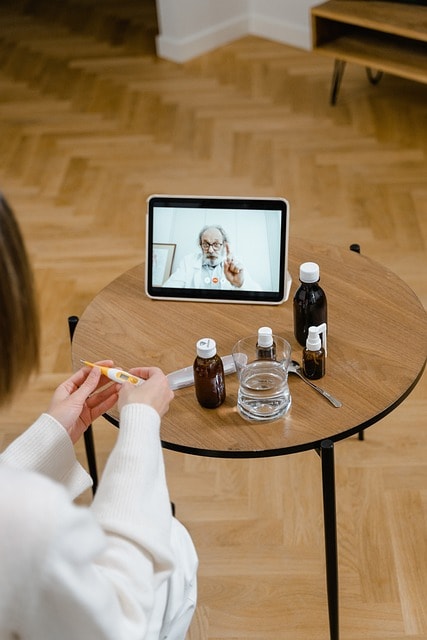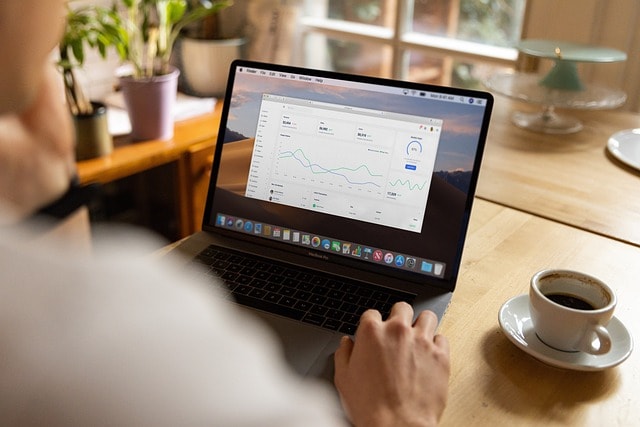Telehealth uses digital tools to deliver healthcare services remotely, making it easier to access care from anywhere. Whether you live far from a clinic or have a busy schedule, telehealth offers a convenient way to consult with healthcare providers. This article covers the benefits, types of services, and how to get started with telehealth.
Key Takeaways
- Telehealth utilizes digital technologies to provide remote healthcare services, enhancing access for patients, especially in remote areas.
- Key telehealth services include virtual visits, remote monitoring, and mobile health applications, each catering to various healthcare needs.
- Despite advantages, telehealth faces challenges such as variability in insurance coverage, privacy concerns, and the need for robust security measures.
What is Telehealth?

Telehealth utilizes digital technologies to provide health care services remotely. It encompasses a wide range of services that facilitate health management and communication between patients and healthcare providers. This includes medical consultations, remote monitoring, and access to personal medical information through mobile health applications.
The goal of telehealth is to improve access to health care, particularly for those in remote or underserved areas. Utilizing smartphones, tablets, and computers, patients can connect with their healthcare providers without traveling long distances. This not only makes health services more accessible but also enhances the overall patient care experience by making it more convenient and efficient.
Types of Telehealth Services
Telehealth encompasses a variety of health care services designed to meet different patient needs. These include virtual visits, remote patient monitoring, and mobile health (mHealth) applications. Each type of service offers unique benefits and uses, catering to various aspects of medical care and patient engagement.
Virtual Visits
Virtual visits allow patients to consult with healthcare providers via phone or video, facilitating direct communication without the need for an in-person appointment. Patients need a device with video and sound capabilities, such as a computer, smartphone, or tablet, to participate in these telehealth services. This method is particularly useful for addressing urgent care matters like mild infections or mental health concerns.
Before a virtual visit, patients should ensure they have a stable internet connection and familiarize themselves with the telehealth platform’s features, including video conferencing and secure messaging. This preparation enhances the virtual care experience and ensures that the consultation goes smoothly.
Patients can also use these platforms to send secure messages to their healthcare providers, further enhancing the communication and care process.
Remote Patient Monitoring
Remote monitoring (RPM) is a telehealth service that enables healthcare providers to monitor patients’ health data outside of clinical settings. This is particularly beneficial for patients with chronic conditions, as it allows continuous tracking of vital signs and overall health. RPM can monitor blood pressure, blood glucose levels, and other critical health metrics in real-time, offering early warnings and better health management.
RPM facilitates better management of chronic conditions and improves patient care by providing healthcare providers with timely and accurate health data. This continuous monitoring helps in making informed decisions about treatment plans and can significantly enhance the quality of life for patients by preventing complications and hospitalizations.
Mobile Health (mHealth)
Mobile health (mHealth) refers to the use of mobile devices and applications to support public health and clinical practices. These applications enable patients to access personal medical information, track fitness metrics, manage medication schedules, and receive reminders for medical appointments. This proactive approach enhances patient engagement and empowerment in personal health management.
mHealth applications include features like symptom trackers and health dashboards, aiding patients in monitoring their conditions and making informed decisions. These tools are especially useful for managing chronic conditions, providing real-time data and insights to be shared with healthcare providers for more effective management.
Benefits of Telehealth

Telehealth offers numerous benefits that make it an attractive option for both patients and healthcare providers. A major advantage is the convenience it offers. Patients can consult their healthcare provider from home, work, or while traveling. This flexibility not only saves time but also reduces the need for travel, making it easier for patients to access health care services.
Another major benefit of telehealth is its ability to expand patient options. Patients can consult with providers who are located far away, allowing them to receive specialized care that may not be available locally. This is particularly useful for patients with rare conditions or those who require the expertise of medical specialists. Telehealth often provides quicker access to appointments compared to traditional visits, reducing wait times and allowing for more timely medical care.
Telehealth also enhances patient safety by reducing the likelihood of illness transmission. By minimizing close contact between individuals, telehealth helps prevent the spread of infectious disease, which is particularly important during pandemics like COVID-19. Telehealth can also reduce stress for family caregivers by offering interventions that improve coping skills and satisfaction with the care process.
Another critical benefit is family involvement. Remote consultations allow families to receive real-time updates on the patient’s health status, participate actively in patient care, and make shared decisions. This not only improves patient outcomes but also strengthens family connections and support systems, which are essential for effective health management.
Limitations of Telehealth

Despite its many advantages, telehealth also has several limitations and challenges that need to be addressed. A primary issue is the variability in insurance coverage for telehealth services. This can create inconsistencies in available care and affect patients’ access to necessary health services.
Additionally, privacy and security concerns are significant challenges in telehealth. Patients may lack a private space for consultations, and there are risks associated with sharing sensitive medical information remotely. Data security issues, such as the risk of hacking during telehealth visits, further contribute to privacy concerns.
Limited access to technology and the need for training on telehealth platforms also pose operational challenges. Healthcare providers, medical professionals, and health professionals may face their own privacy concerns, such as inadequate workspaces that compromise patient confidentiality.
The sustainability of telehealth services relies heavily on the development of reimbursement policies that support both providers and patients. Without adequate reimbursement, it may be challenging to maintain and expand telehealth services, potentially limiting their availability and effectiveness.
Telehealth in Primary Care
Telehealth plays a crucial role in primary care by enabling healthcare providers and primary care provider to assist patients in managing chronic conditions from their homes. Remote patient monitoring allows patients to ask questions, report changes, and follow up on treatments without the need for in-person visits. This is particularly useful for patients with mobility issues or those living in remote areas, as it overcomes barriers to accessing care.
Telehealth also facilitates prescription refills and the discussion of abnormal lab results with primary care providers. Patients can receive short-term medication and address any concerns without having to visit a clinic, making the process more convenient and efficient. This approach not only saves time but also enhances the overall patient care experience.
Telehealth for Chronic Condition Management
Telehealth significantly enhances the management of chronic conditions by enabling healthcare providers to track patient data continuously. This continuous monitoring allows for more frequent interactions between patients and providers, which is essential for managing conditions like high blood pressure, diabetes, and heart conditions. Home blood pressure monitoring combined with telehealth can significantly improve blood pressure control among hypertensive patients.
Patients with chronic conditions are more likely to adhere to medication regimens when they engage in regular telehealth consultations. This increased adherence, along with routine monitoring and education provided through telehealth, leads to significant improvements in managing conditions like diabetes and hypertension.
Telehealth reduces barriers like transportation and mobility issues, making it easier for patients to access the care they need.
Enhancing Family Connections
Family involvement is crucial in telehealth consultations, providing emotional and logistical support for patients. Telehealth enables geographically distant family members to participate in medical consultations with proper authorization. This involvement helps improve health literacy and support medication management for patients, ensuring that they receive the best possible care.
Family members can assist by providing information and asking questions during virtual appointments, enhancing support for the patient. Telehealth tools enable easy communication between family members and healthcare providers, ultimately improving patient care and outcomes.
Enhancing family connections through telehealth is essential for comprehensive patient care.
Security and Privacy Concerns
Security and privacy are paramount in telehealth services. Protecting medical information is crucial to maintaining patient trust and complying with legal standards. Regulatory adjustments to HIPAA and HITECH are necessary to safely manage patient data during telemedicine services. These adjustments ensure that personal health information is secure and that patients’ rights are protected.
Telehealth providers must implement robust data security measures to prevent unauthorized access and data breaches. This includes using secure platforms for telehealth visits and educating patients on best practices for protecting their personal health information. Addressing these concerns allows telehealth to continue growing and providing safe, effective care for patients.
Future of Telehealth

The future of telehealth is promising, with advancements in remote patient monitoring and the integration of artificial intelligence (AI) in health apps. These technologies enable real-time health tracking and help detect health trends, prompting timely patient action. Expanding remote monitoring technologies will enable continuous monitoring and more personalized patient care.
Emerging technologies in telehealth have the potential to significantly impact healthcare delivery, improving patient outcomes and accessibility. As telehealth continues to evolve, it will play an increasingly important role in health care, offering innovative solutions to meet the diverse needs of patients and providers alike.
How to Get Started with Telehealth

Getting started with telehealth is straightforward. Patients can use platforms like the MyChart online platform or mobile app to set up their telehealth accounts. Scheduling an appointment typically involves selecting a convenient time from the available slots. Preparing for a telehealth appointment may involve gathering medical information or questions to discuss during the consultation.
A video visit in telemedicine is a live-video appointment with a care provider. Patients should ensure they have a stable internet connection and a device with video and sound capabilities. Following these steps allows patients to easily access telehealth services and enjoy the benefits of remote care.
Summary
Telehealth is transforming the landscape of health care by offering a convenient, accessible, and efficient way to receive medical care. From virtual visits and remote patient monitoring to mobile health applications, telehealth services cater to a wide range of patient needs. Despite some limitations, the benefits of telehealth far outweigh the challenges, making it a valuable addition to modern healthcare.
As we look to the future, the continued advancement of telehealth technologies will further enhance patient care and accessibility. Embracing telehealth can improve health outcomes, reduce stress for patients and caregivers, and strengthen family connections. We encourage you to explore telehealth services and experience the numerous benefits they offer.
Frequently Asked Questions
What is telehealth?
Telehealth is the use of digital technologies to deliver health care services remotely, facilitating improved access and communication between patients and providers.
What types of telehealth services are available?
Telehealth services encompass virtual visits, remote patient monitoring, and mobile health applications, providing convenient access to healthcare. These options enhance patient care while ensuring flexibility and efficiency in receiving medical services.
How does telehealth benefit patients and providers?
Telehealth significantly benefits patients and providers by offering convenience, quicker access to appointments, and enhanced safety through the reduction of illness transmission. This accessibility allows for a more flexible healthcare experience for all involved.
What are the limitations of telehealth?
Telehealth is limited by issues such as inadequate insurance coverage, privacy concerns, security vulnerabilities, and various operational challenges. These factors can impact the accessibility and effectiveness of virtual healthcare services.
How can I get started with telehealth?
To get started with telehealth, create an account on a platform such as MyChart and ensure you have the required technology and a reliable internet connection. This preparation will facilitate a smooth appointment experience.







Leave A Comment
You must be logged in to post a comment.